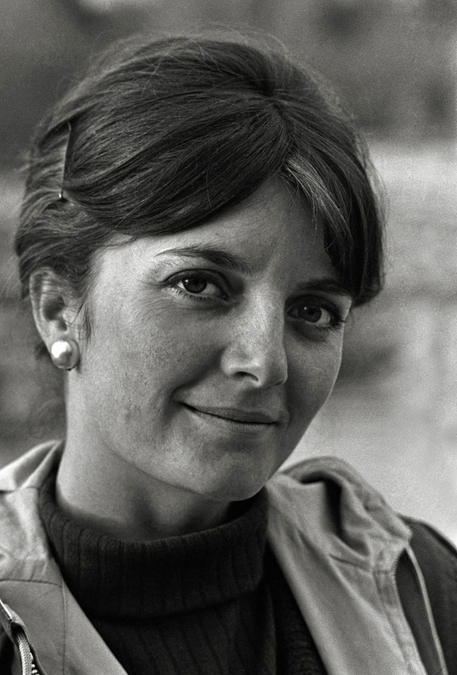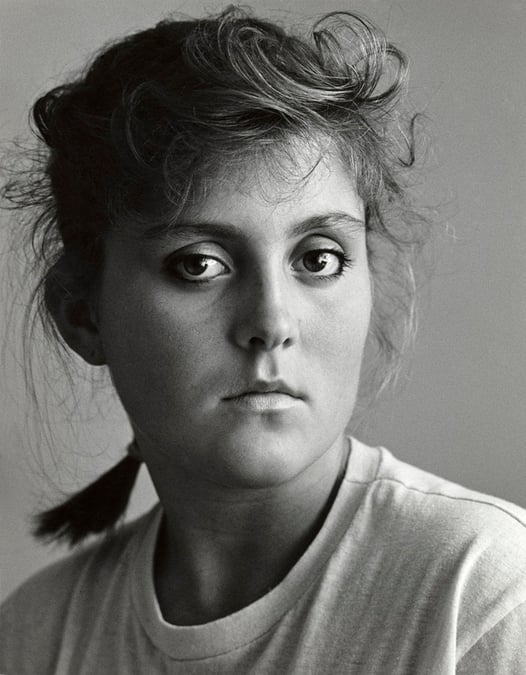wilonstott
Wil O.
I just picked up this lens for use with my FE2.
I've just put a roll of Provia 100f through it, and I'm waiting to get them back.
In the mean time, I'd love to see some examples or hear some thoughts about this lens.
Thanks in advance,
-Wil
I've just put a roll of Provia 100f through it, and I'm waiting to get them back.
In the mean time, I'd love to see some examples or hear some thoughts about this lens.
Thanks in advance,
-Wil
View Range
Well-known
The SLR lens is essentially identical to the RF lens. Designed in 1953, it helped Nikon into prominence. It is legendary and sold in huge numbers. Greater flexibility from other lenses has reduced its use today. Search for and check out the following post-thread for images.
"Post your Nikkor 10.5cm 2.5 PC pics"
"Post your Nikkor 10.5cm 2.5 PC pics"
wilonstott
Wil O.
The SLR lens is essentially identical to the RF lens. Designed in 1953, it helped Nikon into prominence. It is legendary and sold in huge numbers. Greater flexibility from other lenses has reduced its use today. Search for and check out the following post-thread for images.
"Post your Nikkor 10.5cm 2.5 PC pics"
Now I was under the impression that the earlier lens is a Sonnar design and the later one (like mine) is a Gauss design. They'll render a bit differently, yes?
RObert Budding
D'oh!
I just picked up this lens for use with my FE2.
I've just put a roll of Provia 100f through it, and I'm waiting to get them back.
In the mean time, I'd love to see some examples or hear some thoughts about this lens.
Thanks in advance,
-Wil
Here's a shot taken on a Nikon D700.
Attachments
wilonstott
Wil O.
Beautiful shot, Robert. Thanks for sharing.
Shac
Well-known
The SLR lens is essentially identical to the RF lens. Designed in 1953, it helped Nikon into prominence.
Actually the Ai-S version is not identical - The one you refer you (the first version) was a Sonnar design and the second (Ai-S and Ai version was a Gauss formula.
The Gauss version is better corrected for close-range images.
But as you say whatever version is a great lens
105 Sonnar version

105 Gauss version

sevo
Fokutorendaburando
Actually the Ai-S version is not identical - The one you refer you (the first version) was a Sonnar design and the second (Ai-S and Ai version was a Gauss formula.
The K version (pre AI rubberized barrel) is Gauss as well - the change happened some time before the switch to K, so there even are some aluminium barrel Gauss ones. In all, more than half the Non-AI 105mm SLR Nikkors are Gauss types.
The Gauss type is the famous one - at the time of its introduction it was tested to be the highest resolution 35mm lens.
Shac
Well-known
Sevo true - I stand corrected. The Gauss came in first before the change to Ai in 1971 according to Roland Virk
x-ray
Veteran
The SLR lens is essentially identical to the RF lens. Designed in 1953, it helped Nikon into prominence. It is legendary and sold in huge numbers. Greater flexibility from other lenses has reduced its use today. Search for and check out the following post-thread for images.
"Post your Nikkor 10.5cm 2.5 PC pics"
The First non AI version was the same as the LTM version but in the 70's the formuls changed. Both versions are great but the newer version is exceptional. I own both in Nikon mount and the rear element is the way to tell the difference. One is larger tha the other but not having them I front of me I don't remember which has the larger rear element.
I'm a huge fan of the 105 and have the LTM version as well.
View Range
Well-known
Peter Braczko states there was a design change in 1973, starting with S/N 500001. Has anyone found a optical cross section of the second version?
The official Nikon discussion is interesting. http://nikkor.com/story/0045/
The official Nikon discussion is interesting. http://nikkor.com/story/0045/
View Range
Well-known
MIR shows the two designs.
http://www.mir.com.my/rb/photography/companies/nikon/nikkoresources/105mmnikkor/105mm25.htm
http://www.mir.com.my/rb/photography/companies/nikon/nikkoresources/105mmnikkor/105mm25.htm
x-ray
Veteran
This is one of my favorite Nikkor lenses since the 60's. The focal length is just right. IMO it's one of Nikons best primes.
Shac
Well-known
The second (Gauss) has the larger rear element - but of course that's a relative statement and you'd need both side by side to be sure The difference shows well in the MIR page that View Range showed.
The difference shows well in the MIR page that View Range showed.
sevo
Fokutorendaburando
According to the Nikon lens serials database, lenses up to 286276 (1971) had the old five element, three groups design, while all lenses with a serial starting with a 4 or higher are the five element four group Gauss type.
Now I was under the impression that the earlier lens is a Sonnar design and the later one (like mine) is a Gauss design. They'll render a bit differently, yes?
Yes, the two lenses should render a bit differently. The later Gauss formula lens was specifically designed for smoother OOF rendering in an attempt to counter the reputation that Nikkor lenses had at the time for poor bokeh.
Sonnar optical formula:

Gauss optical formula:

Found here.
nikon_sam
Shooter of Film...
Mine would be the "K" version but upgraded with the newer style Ai ring...Serial #685374...
A very nice little lens that needs to be used more often...
A very nice little lens that needs to be used more often...
Wulfthari
Well-known
Another lens to be added to things to buy for My F2s, even if usually I prefer the 85 mm length, can this one be used as a normal lens replacement like the 85/1.8?
peterm1
Veteran
I have long had a lovely almost mint sonnar version and not too long ago picked up a cheap but also very good condition first model Gauss version of the lens. The price was low because it needed conversion to AI specification. However I can do that myself and recently did so. I must get them both out and do some comparison shots at the same apertures. I have always loved the rendering of the sonnar one and would like to see how the later one performs by comparison. If it comes to that I also have a 105mm f4 micro and 135mm f2.8 and should compare all of them. I will get back to you.
I must take a small issue with jonmanjiro though - I have never heard that the later 105mm was developed because the sonnar one had inadequate bokeh. In fact sonnars in general are well for the quality of bokeh and for their lovely "soft/sharp" rendering of in focus areas). I have read on a number of occasions the new lens design was adopted because the use of this focal length lens changed over time. In the early days longer lenses were used for long distance shots as you might expect. But this focal length Nikkor was one that came to be adopted more for portrait work. Gauss lenses were regarded as being better optimized for this work which usually takes place at much closer range. Hence the decision to redesign.
BTW the famous "Afghanistan girl" photo by Steve McCurry was taken with the later AI-s version of this lens. Nothing to complain about there in terms of performance.
http://en.wikipedia.org/wiki/Afghan_Girl
I must take a small issue with jonmanjiro though - I have never heard that the later 105mm was developed because the sonnar one had inadequate bokeh. In fact sonnars in general are well for the quality of bokeh and for their lovely "soft/sharp" rendering of in focus areas). I have read on a number of occasions the new lens design was adopted because the use of this focal length lens changed over time. In the early days longer lenses were used for long distance shots as you might expect. But this focal length Nikkor was one that came to be adopted more for portrait work. Gauss lenses were regarded as being better optimized for this work which usually takes place at much closer range. Hence the decision to redesign.
BTW the famous "Afghanistan girl" photo by Steve McCurry was taken with the later AI-s version of this lens. Nothing to complain about there in terms of performance.
http://en.wikipedia.org/wiki/Afghan_Girl
I must take a small issue with jonmanjiro though - I have never heard that the later 105mm was developed because the sonnar one had inadequate bokeh. In fact sonnars in general are well for the quality of bokeh and for their lovely "soft/sharp" rendering of in focus areas). I have read on a number of occasions the new lens design was adopted because the use of this focal length lens changed over time. In the early days longer lenses were used for long distance shots as you might expect. But this focal length Nikkor was one that came to be adopted more for portrait work. Gauss lenses were regarded as being better optimized for this work which usually takes place at much closer range. Hence the decision to redesign.
I was actually just paraphrasing Nikon's own website, and it wasn't so much the previous sonnar version of the 105/2.5 that had a reputation for bad bokeh, but Nikkor lenses in general. Particularly in Japan
An anecdote back from the era of the Nikkor Auto lenses. There was a lens that delivered incredibly sharp resolution, but the defocus image (blur) was not so good. particular lens branded the whole Nikkor Auto family with a reputation of having bad defocus images, especially in Japan.
As the Nikkor 105mm f/2.5 demonstrates, however, at the same time Nippon Kogaku K.K. was also making lenses offering the perfect combination of defocus image, tonal rendition and gradation.
peterm1
Veteran
I was actually just paraphrasing Nikon's own website, and it wasn't so much the previous sonnar version of the 105/2.5 that had a reputation for bad bokeh, but Nikkor lenses in general. Particularly in JapanI've quoted Nikon's website below (taken from here). Its a poor translation though, and the original Japanese version here makes more sense.
I am OK with the qute from the Nikon site - it qualifies appropriately the statement seeming to exclude the 105mm from criticism regarding bokeh.
cheers
Share:
-
This site uses cookies to help personalise content, tailor your experience and to keep you logged in if you register.
By continuing to use this site, you are consenting to our use of cookies.

